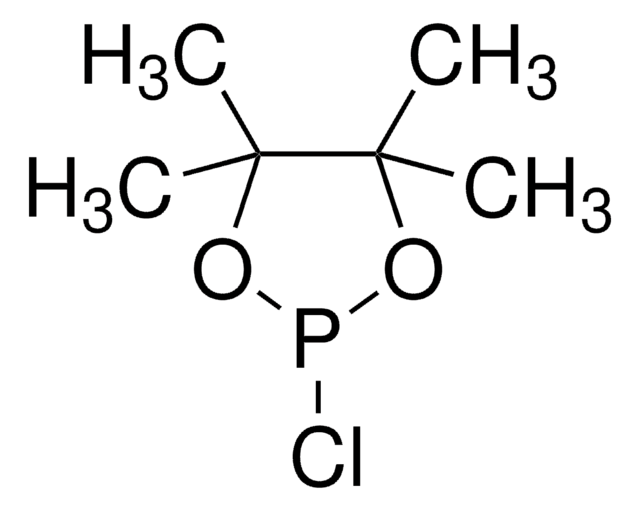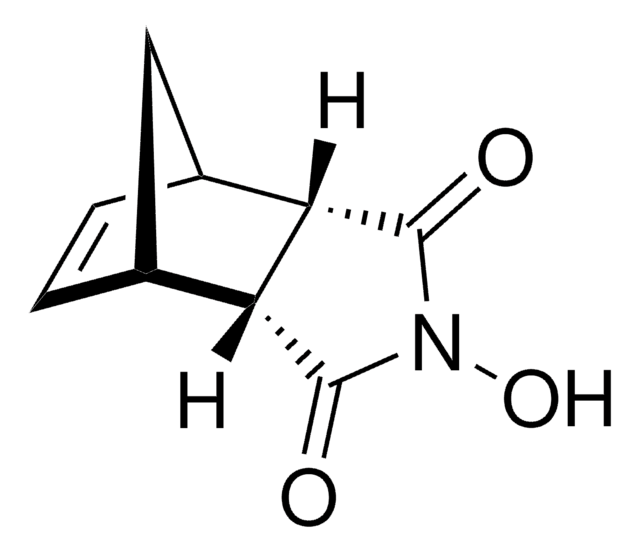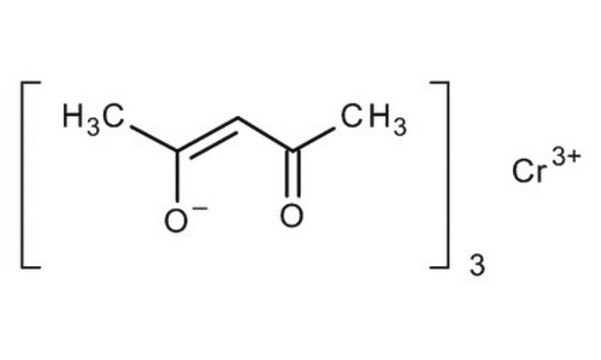Wichtige Dokumente
202231
Chrom(III)-Acetylacetonat
97%
Synonym(e):
Chrom(III)-2,4-Pentandionat, Cr(acac)3
About This Item
Empfohlene Produkte
Assay
97%
Form
solid
Eignung der Reaktion
core: chromium
bp
340 °C (lit.)
mp (Schmelzpunkt)
210 °C (lit.)
SMILES String
CC(=O)\C=C(\C)O[Cr](O\C(C)=C/C(C)=O)O\C(C)=C/C(C)=O
InChI
1S/3C5H8O2.Cr/c3*1-4(6)3-5(2)7;/h3*3,6H,1-2H3;/q;;;+3/p-3/b3*4-3-;
InChIKey
JWORPXLMBPOPPU-LNTINUHCSA-K
Suchen Sie nach ähnlichen Produkten? Aufrufen Leitfaden zum Produktvergleich
Verwandte Kategorien
Anwendung
- Redox-Activity Catalysis: Discusses the ligand field-activated redox activity of Chromium(III) acetylacetonate, highlighting its use in hydrogenation catalysis (Vinum et al., 2020).
- Diffusion Behavior in Supercritical CO2: A study examining the diffusion behavior of Chromium(III) acetylacetonate in supercritical CO2, aiding in the application of supercritical fluids in materials processing (Cordeiro et al., 2016).
Hinweis zur Analyse
Signalwort
Warning
H-Sätze
Gefahreneinstufungen
Eye Irrit. 2 - Skin Irrit. 2
Lagerklassenschlüssel
11 - Combustible Solids
WGK
WGK 2
Flammpunkt (°F)
>392.0 °F
Flammpunkt (°C)
> 200 °C
Persönliche Schutzausrüstung
dust mask type N95 (US), Eyeshields, Gloves
Hier finden Sie alle aktuellen Versionen:
Besitzen Sie dieses Produkt bereits?
In der Dokumentenbibliothek finden Sie die Dokumentation zu den Produkten, die Sie kürzlich erworben haben.
Kunden haben sich ebenfalls angesehen
Artikel
Magnetism and magnetic materials have been of scientific interest for over 1,000 years. More recently, fundamental investigations have focused on exploring the various types of magnetic materials and understanding the magnetic effects created by electric currents.
Unser Team von Wissenschaftlern verfügt über Erfahrung in allen Forschungsbereichen einschließlich Life Science, Materialwissenschaften, chemischer Synthese, Chromatographie, Analytik und vielen mehr..
Setzen Sie sich mit dem technischen Dienst in Verbindung.











